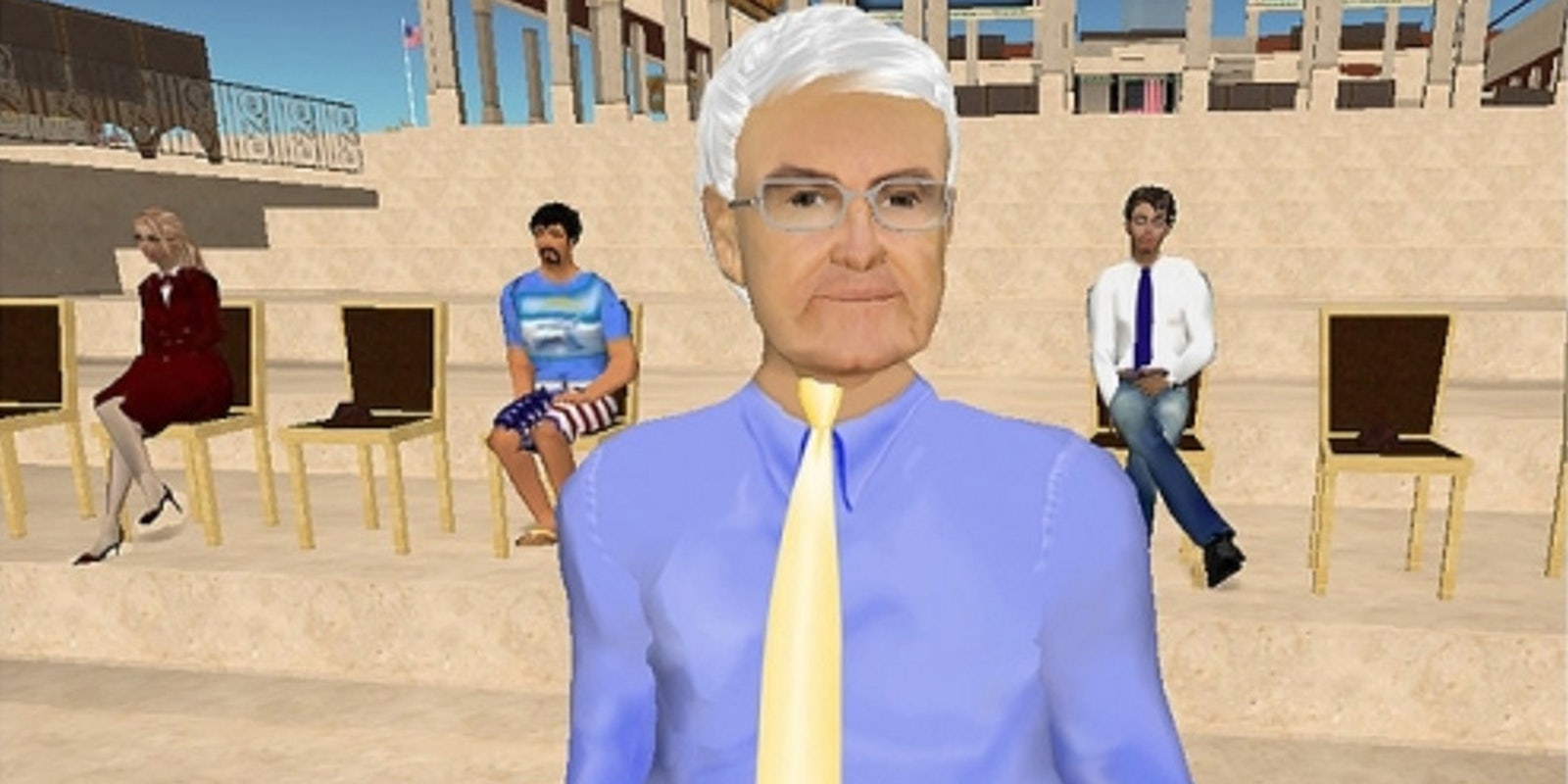You can say a lot of things about Newt Gingrich, but you definitely can’t say that he’s totally out of the loop when it comes to technology. Sure, he might not have known what a smartphone was until 2013, but we can certainly overlook that—especially since it appears as though he totally predicted the rise of virtual reality technology all the way back in 2007.
Gingrich recently took a trip to Facebook and got to go face-on with the Oculus Rift. The former presidential candidate and House speaker wrote about the experience at length on his blog, raving about its ability to transport the user to another reality, and predicting that the device would “change the world.”
Eight years ago, the Oculus Rift was still years from conception and virtual reality as a whole was largely unexplored territory. The online virtual world of Second Life was as close as anyone could come to a digital existence, and that’s exactly where Gingrich went to talk about the future of technology.
With a yellow tie, blue suit, and the blindingly white hair that is his signature, Gingrich—or rather, a 3D avatar that he was controlling—took to the steps of a virtual U.S. Capitol and boldly declared that within 10 years, virtual reality would explode and holograms would be a standard.
“I think that extranets and 3D Internet present a brand new approach to collaboration,” Gingrich noted while explaining why he enjoys the concept of Second Life. That’s when he began to make predictions that are eerily close to our current state of technology.
“While it is true that [Second Life] still fairly primitive by the standards of having holograms or being face-to-face in more complex ways, I think you’re going to find that this is an example of how we can rethink learning… how we can rethink shopping, how we can rethink bringing together meetings.”
Holograms? Face-to-face virtual interactions? We’re just days removed from a Microsoft event where we witnessed a man pinning a Skype hologram of his loved ones to his wall so that he could, as he put it, “see their smiling faces and be inspired to reach out to them.”
In his speech, it’s clear that Gingrich believed—at least in 2007—that holograms were indeed what the then-current technology would evolve into, but perhaps he simply got amazingly lucky with that prediction, right? If you continue through his speech you’ll see that it’s not just a shot in the dark—he really was on to something.
The next portion of his talk is like a rapid-fire truth cannon, spitting predictions left and right:
“I think that 3D Internet, in all of its various forms, is going to become one of the great breakthroughs of the next 10 years.”
He couldn’t possibly be more correct with this one. Less than eight years after he made this prediction, virtual worlds and virtual reality are already exploding.
“I think it’s important to recognize that this is rapidly going to extend beyond gaming.”
Right on the money. The Oculus Rift will be fun for gamers, but Facebook didn’t buy Oculus for its gaming potential.
“It’s a parallel that enables us to do things that would be much more difficult to do in the real world.”
Bingo. He might have just been using the virtual world to make a political speech like he’s done countless times before, but he certainly saw the sky as the limit to what we could experience in a virtual setting.
Second Life itself has seen its popularity drop off considerably since its peak in 2007, but its core concept has been carried on across countless gaming and social applications.
Now, with Google Cardboard in our hands, Oculus Rift on the horizon, and Microsoft’s Hololens teasing us at every turn, maybe we should ask him which one will be the most enjoyable? Or maybe he can just help us guess tomorrow’s lottery numbers.
Screengrab via PollywogPress/YouTube



